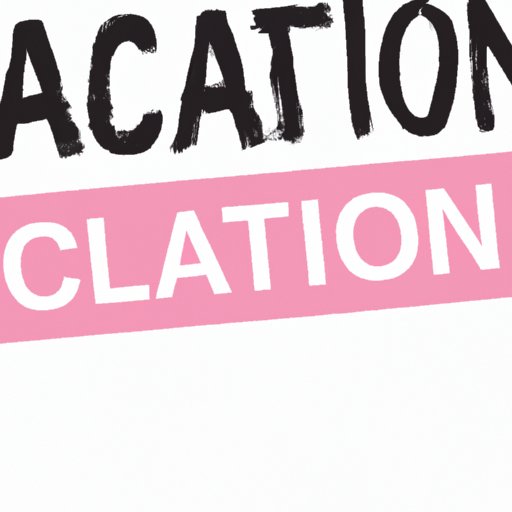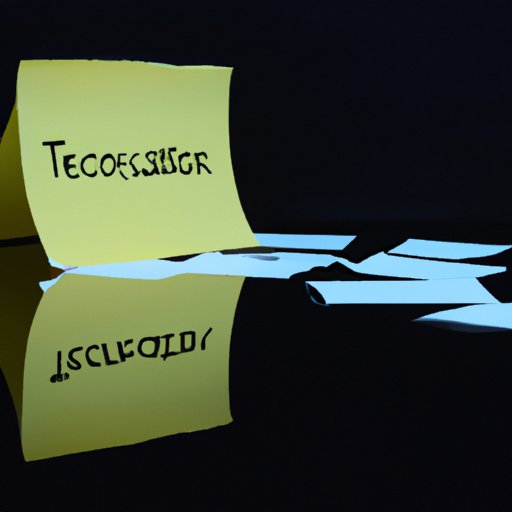Introduction
The conclusion paragraph is arguably one of the most important elements of any written piece. It serves as a way to tie together all the ideas that were presented in the body of the paper, and to leave the reader with a lasting impression. But how do you start off a conclusion paragraph?
In this comprehensive guide, we will explore different ways to start off a conclusion paragraph. We will look at techniques such as summarizing main points, offering a final thought or opinion, providing a call to action, making a prediction about the future, reflecting on the importance of the topic, asking a thought-provoking question, and suggesting further research.
Summarizing Main Points
One of the easiest ways to start off a conclusion paragraph is by summarizing the main points that were made in the body of the paper. This can be done in one or two sentences, depending on the length of the paper. This is a great way to remind the reader of the key points that were discussed and to bring the paper full circle.
When summarizing the main points, it is important to take a few moments to reiterate the arguments that were made and to connect them back to the introduction. This will help to make the conclusion more impactful and to provide a sense of closure for the reader.

Offer a Final Thought or Opinion
Another effective way to start off a conclusion paragraph is to offer a final thought or opinion on the topic. This can be a simple statement of fact or an emotional appeal to the reader. It is important to make sure that the statement is based on evidence and that it is relevant to the topic at hand.
When offering a final thought or opinion, it is also important to draw conclusions based on the evidence that was presented. This will help to demonstrate to the reader that the argument is well-supported and that it is valid. This can be done in one or two sentences, depending on the length of the paper.

Provide a Call to Action
Another great way to start off a conclusion paragraph is to provide a call to action. This can be done by urging readers to take some sort of action or by showing them how the conclusion affects them personally. It is important to make sure that the call to action is relevant to the topic at hand and that it is something that the reader can actually do.
When providing a call to action, it is also important to ensure that it is clear and concise. This will help to ensure that the reader understands what needs to be done and will make the call to action more effective.
Make a Prediction about the Future
Another way to start off a conclusion paragraph is to make a prediction about the future. This can be done by exploring potential outcomes or by offering insight into future events. It is important to make sure that the prediction is based on evidence and that it is relevant to the topic at hand.
When making a prediction about the future, it is also important to consider the implications of the prediction. This will help to make the prediction more meaningful and will provide the reader with something to think about.

Reflect on the Importance of the Topic
Another great way to start off a conclusion paragraph is to reflect on the importance of the topic. This can be done by highlighting the significance of the topic and by examining the implications of the conclusion. This will help to emphasize the importance of the topic and will provide the reader with something to consider.
When reflecting on the importance of the topic, it is also important to make sure that the reflections are based on evidence and that they are relevant to the topic at hand. This will help to ensure that the reflections are meaningful and that they are effective.
Ask a Thought-Provoking Question
Another effective way to start off a conclusion paragraph is to ask a thought-provoking question. This can be done by asking readers to reflect on the topic or by encouraging them to further explore the issue. It is important to make sure that the question is relevant to the topic at hand and that it is something that the reader can actually answer.
When asking a thought-provoking question, it is also important to make sure that the question is clear and concise. This will help to ensure that the reader understands the question and will make the question more effective.
Suggest Further Research
Finally, another great way to start off a conclusion paragraph is to suggest further research. This can be done by outlining possible research topics or by providing sources for additional information. It is important to make sure that the research topics are relevant to the topic at hand and that they are something that the reader can actually do.
When suggesting further research, it is also important to make sure that the research topics are clear and concise. This will help to ensure that the reader understands the research topics and will make the research topics more effective.
Conclusion
In conclusion, there are many different ways to start off a conclusion paragraph. From summarizing main points to offering a final thought or opinion, providing a call to action, making a prediction about the future, reflecting on the importance of the topic, asking a thought-provoking question, and suggesting further research – there are plenty of options to choose from. Regardless of which technique you choose, it is important to make sure that your conclusion is clear and concise, and that it ties the entire paper together.
Writing a conclusion paragraph can be a difficult task, but with a little practice, it can be done. Take the time to explore these techniques and find the one that works best for you.
(Note: Is this article not meeting your expectations? Do you have knowledge or insights to share? Unlock new opportunities and expand your reach by joining our authors team. Click Registration to join us and share your expertise with our readers.)
